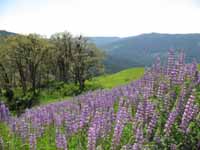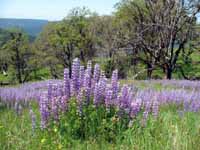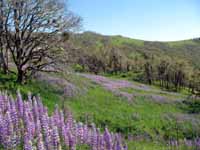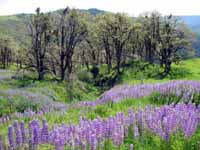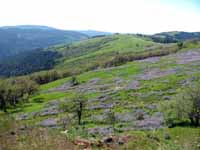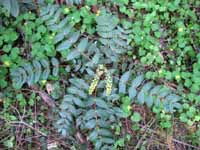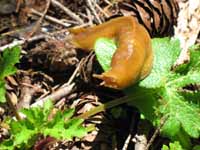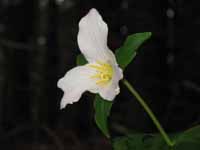|
Bald Hills Fire Management
Redwood National and State Parks
|
This prescribed fire in the Bald Hills of Redwood National Park occurred in September 2008.
Botanist Leonel Arguello explains how this fire contributes to the objectives of the Park including broader fire management objectives for the area.
Click on the expand button to see this in full screen mode or if your browser does not support this embedded video, visit its source here. |
The Bald Hills portion of Redwood National and State Parks harbor the highest elevation coast redwood forests that exist. These forests are so high that along with fire and wind, ice storms provide a disturbance that is found in few other portions of the coast redwood range. Among these upland mixed evergreen forests dominated by Douglas fir, coast redwood, tanoak, and Pacific madrone are prairies fringed by Oregon white oak. This remarkable landscape mosaic provides habitat for a wide range of faunal and floral diversity, including Roosevelt Elk and native plants, such as these blue lupine that offer a stunning display in the years after fire (below).
Given the long history of Native American use of these upland areas, it comes as no surprise that both upland redwood forests and prairies burned frequently, often at intervals less than 10 years, based on fire scar analysis. The Native Yurok and Chilula spent their summers here, burning for a number of reasons. Well-managed fire improved the quality of the tanoak acorn harvest, it faciliated deer and elk hunting, it improved grass seed production for harvest, it provided a tool for harvesting desirable insects for consumption and it reduced the populations of others that were unwanted. Fire also greatly improved the quality of plant materials used in basketmaking, such as hazel among others.

Decades ago, managers reintroduced fire into the prairies using Native American traditions and values as a guide (Underwood et al. 2003). Since then, several prairies have been burned repeatedly. In recent years, the use of fire in restoration has been extended to marginal stands of second growth Douglas fir-coast redwood forest. This early effort to restore fire to these uplands forests and prairies will ensure that future wildfires that initiate within and outside the Park's forested boundaries can be managed in ways that are consistant with overall park values and objectives. Given the history of frequent fire across upland meadow and forested sites, the upland biodiversity of the Park appears to be sufficiently adapted to fire (below).
Reference Cited
Underwood, Stephen, Leonel Arguello and Nelson Siefkin. 2003. Restoring ethnographic landscapes and natural elements in Redwood National Park. Ecological Restoration 21: 278-283.
Related Pages
Steve Norman
|
|


